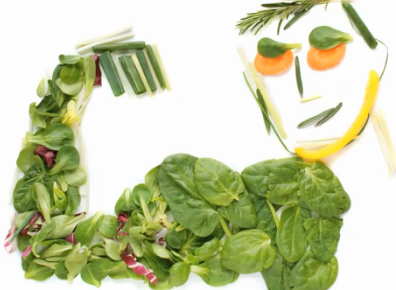 BY JILL CASTLE, MS, RDN of usaswimming.org
BY JILL CASTLE, MS, RDN of usaswimming.org
It can be challenging to get swimmers to eat breakfast, especially as they get older and busier. They say no. They run out the door. They have no time for a meal. They aren’t hungry.
The excuses go on and on.
However, all swimmers may benefit from a routine that includes eating a healthy breakfast.
The positive impact on growing children and teens have been touted for years and include: improved attention and focus in school, better academic scores, an ability to regulate eating, blood sugar control throughout the day, a healthy body weight, and for the athlete, the availability of energy and nutrients for exercise.
Researchers highlight protein as a powerful influence on blood sugar and weight control, particularly when it shows up in the earlier part of the day.
In fact, University of Missouri researchers suggest teens eat a high protein breakfast (containing around 30 grams of protein) to improve blood sugar control after eating, temper fat gain, and encourage a healthy body weight.
In young athletes, research further emphasizes the importance of evenly distributing protein throughout the day as a key to building, repairing, and maintaining muscle.
Making sure the swimmer gets a protein-based breakfast clearly helps in many areas.
Swimmers can get a variety of quality protein at breakfast by using foods such as milk, soymilk, Greek yogurt, regular yogurt, eggs, cheese, cottage cheese, tofu, beef, poultry, fish, beans, lentils, soybeans, nuts and nut butters.
Try these 10 protein-based breakfast ideas. (They are simple and easy for the swimmer to make independently!):
Easy Egg Sandwich
Almost like a fast food option, this egg sandwich is ready in no time. Scramble the egg with a bit of water, place in a microwave-safe bowl and cook for one minute. Place the disc-shaped egg on an English muffin and add ham or Canadian bacon, and a slice of cheese. If you want to bump up the protein even more, double the egg, cheese or ham.
Breakfast Bento Box
Pack one or two large hard-boiled eggs, 1/4 cup almonds, 1/2 cup low-fat cottage cheese topped with 1/2 cup berries, and 4 to 6 whole-grain crackers in a bento box or other re-sealable container.
Apple Walnut Oatmeal
Cook 3/4 cups of dry oatmeal with 1 1/4 cup of skim milk. Top with 1/4 cup of chopped walnuts and 1 chopped apple. Sprinkle with cinnamon and drizzle with honey.
Nut & Berry Parfait
Layer 1 cup of vanilla or plain Greek yogurt, ½ cup raspberries and blueberries, and ¼ cup chopped pecans in a tall glass or Mason jar.
Peanut Butter Toast
Swipe two hearty, whole grain slices of toast with 1 tablespoon of peanut butter each. Serve with a 12-ounce glass of milk or non-dairy milk substitute.
Overnight Oatmeal (made with milk)
Mix ½ cup of oats with 1 cup of low fat milk or soymilk. Stir in 1 tablespoon of peanut butter, and top with 2 tablespoons of chopped peanuts and 1 small banana. Refrigerate overnight.
Cottage Cheese and Blueberry Bowl
In a bowl, place a cup of low-fat cottage cheese next to ½ cup of blueberries and ½ cup high-protein granola. Sprinkle with chia seeds or flax meal.
Egg, Ham & Cheese Bagel
Akin to the local bagel shop fare, toast a bagel and top it with an egg or two (scrambled or fried) and top with a slice of cheese. On-the-go tip: Wrap the bagel sandwich in tin foil immediately after assembly. The sandwich stays warm and the cheese melts nicely.
Breakfast Egg Wrap
In a flour or whole grain tortilla, layer scrambled eggs, cheese, and fresh spinach. Wrap in tin foil. Or, sauté onions, mushrooms and chopped green peppers or any other veggies on hand and add to the eggs; top with cheese and wrap.
Avocado Toast with an Egg
Toast a piece of crusty, whole grain bread. Smash ½ of an avocado on top of the toast. Fry an egg and lay it on top. Sprinkle with salt and pepper, or a mix of spices such as cumin, paprika and chili.
Jill Castle, MS, RDN is a registered dietitian, childhood nutritionist, and youth sports nutrition expert. She is the author of Eat Like a Champion: Performance Nutrition for Your Young Athlete. Learn more about Jill atwww.JillCastle.com and check out her free list of 70 Awesome Pre-Workout Snacks for Kids.
 The swimmer appetite is legendary.
The swimmer appetite is legendary.